by Lorri | Feb 17, 2010 | UnCorked
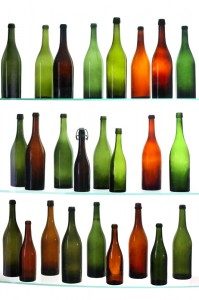 Consumers, retailers, restaurant owners and distributors — we are all faced with thousands of choices when it comes to buying a wine.
Consumers, retailers, restaurant owners and distributors — we are all faced with thousands of choices when it comes to buying a wine.
Last month I was honored to judge for the Professional Wine Buyers Competition in Santa Rosa, Calif. With more than 400 wines and 16 judges, our appraisal offered a unique methodology compared with that at other competitions. In addition to the wines’ overall quality, the retail price was also considered in the scoring, a crucial factor in any buyer’s recommendation of a wine.
The competition concluded with a similar opinion resonating among all the judges: Buyers are looking for wines they would recommend to a friend because it tastes great and is a great value.
Below are a few winning wines available in Arkansas (with two Arkansas wines making the winners list). For a complete listing of results visit ProWineBuyersComp.com.
- 2008 Duck Pond Pinot Gris, Oregon (about $12 retail)
- 2007 Duck Pond Syrah, Oregon (about $12 retail)
- 2008 Eola Hills Pinot Noir, Oregon (about $17 retail)
- 2008 Eola Hills Chardonnay, Oregon (about $14 retail) 2008 Vertikal Riesling, Germany (about $10 retail)
- 2007 Vertikal Spatlese Riesling, Germany (about $12 retail)
- NV Post Familie Vineyards White Muscadine, Arkansas (about $10 retail)
- NV Post Familie Vineyards Red Muscadine, Arkansas (about $10 retail)
- 2005 Beaucanon Estate L’Cuvee Cabernet Franc, California (about $30 retail)
- 2006 Gloria Ferrer Carneros Chardonnay, California (about $24 retail)
- 2007 Chateau Ste. Michelle Indian Wells Cabernet Sauvignon, Oregon (about $22 retail)
- 2008 Erath Vineyards Pinot Gris, Oregon (about $18 retail)
- 2008 Columbia Crest Grand Estate Cabernet Sauvignon, Washington (about $18 retail)
- 2008 Turnbull Cellars Sauvignon Blanc, California (about $20 retail)
by Lorri | Feb 10, 2010 | UnCorked
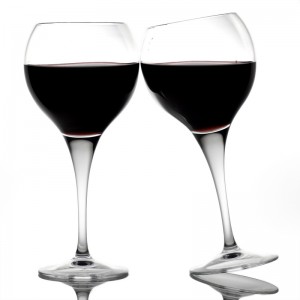 Valentine’s Day is just around the corner, so here are a few special and fun ideas for wooing the wine lover in your life.
Valentine’s Day is just around the corner, so here are a few special and fun ideas for wooing the wine lover in your life.
HOMEMADE DESSERT
Call me a romantic but there is just something about homemade desserts. Valentine’s Day is an ideal occasion to take the time to show a little love in the kitchen. Whether you are planning a family dinner at home or intimate dinner out, you can always end your evening with a special treat for your valentine. Not sure where to start? Consider The Wine Lover’s Dessert Cookbook: Recipes and Pairings for the Perfect Glass of Wine by Mary Cech. The book offers exceptional recipes and easy wine advice and pairings for the novice or connoisseur.
THE SPECIAL BOTTLE
A sentimental bottle of wine is something to be shared today or in the future. Consider ports from your anniversary year, wine regions with romantic memories or vintage champagnes to be opened together 10, 20 or 30 years from now.
CHOCOLATES
Pairing wines with chocolates can be a great adventure for food and wine lovers but a single box of chocolate and bottle could leave your sweetheart wanting more. Consider a “chocolate of the month club” for your chocolates and a local retailer for your wines. Together, with the monthly arrival of the chocolate, it’s a fun time to explore a new pairing. It doesn’t have to be complicated, just stay with the basics and the pair-up will be perfection. White chocolate: framboise or moscato. Lightbodied milk chocolate: framboise, pinot noir or cabernet sauvignon. Medium bodied milk or semisweet chocolate: cabernet sauvignon, port, merlot or syrah. Full-bodied bittersweet or dark chocolate: cabernet sauvignon or port.
THE WINE GETAWAY
What’s more romantic than a trip to a wine region with the one you love? There are many options and choices ranging from a day trip to Altus, a long weekend in California or a destination vacation to France or Italy. Of course your valentine will love this gift but you get to enjoy it too!
by Lorri | Feb 3, 2010 | UnCorked
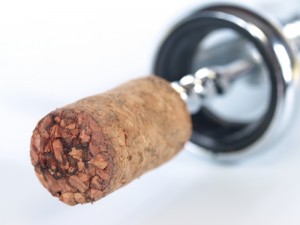 Knowing how to judge the quality of a wine is essential to its enjoyment. No one should suffer through horrid smells and tastes simply because of lack of information. Understanding a wine’s quality starts with a simple question you can ask yourself: Is this wine clean?
Knowing how to judge the quality of a wine is essential to its enjoyment. No one should suffer through horrid smells and tastes simply because of lack of information. Understanding a wine’s quality starts with a simple question you can ask yourself: Is this wine clean?
Whether you are a beginner or expert your nose will quickly guide your answer. Clean wines have no trace of musty, moldy, rotten egg or vinegar smells.
Twenty years ago poor quality, unclean wines were more commonplace, but with today’s technology only a minuscule amount of bottles are faulty because of an error in the wine-making process. Today, the culprit, most likely, is the cork or disturbances along the journey from the winery to your glass. The following are some common problems and ways to identify them.
CORK TAINT/ CORKED WINES
Cork taint is the most common wine fault and is thought to affect up to 10 percent of wines bottled in the world. The befouling happens when a cork infected with a fungus producing 2,4,6-trichloroanisole (TCA) contacts the wine. The contact imparts musty and moldy aromas. Research shows that TCA also may be linked, ironically enough, to the chlorine bleaching used to sterilize corks. Corked wines are one of the most obvious faults to detect because of the musty aromas.
In the late 1990s, cork taint forced many wine producers to seek alternate closures, including screw caps and synthetic corks. The switch to screw top or synthetic was a direct result of the escalating occurrence of tainted corks. The TCA fungus is not able to harbor in screw tops, beer tops or synthetic closures.
OXIDATION
This results when wine is exposed to air, usually because of a faulty cork.
Oxidized wines are simple to detect, with their dull or stale fruit aromas and flavors. These wines will have a brownish color because of the contact with oxygen, much like how a cut apple will brown when exposed to air. Keep in mind a few wines are intentionally oxidized during the fermenting process, such as sherry and port. But for the others, oxygen is not a wine’s friend during the making or in the bottle.
VOLATILE ACIDITY
Though rare, this fault occurs from poor hygiene or temperatures during wine making. At its worst this fault is easy to single out, with aromas of vinegar or nail polish remover.
BAKED WINES
Baked or cooked wines largely result from exposure to high temperatures during storage or transportation. Not only does the extreme heat change the taste but it can also cause oxidation. When a wine is exposed to high temperatures the liquid expands, forcing the cork from the neck of the bottle. After the wine cools the cork will contract, leaving the opportunity for air to trickle in around the displaced cork.
Detecting a cooked wine is straightforward because it tastes and smells as if it was cooked. The wines usually lose freshness, smelling more like stewed fruit or prunes. In my experience this fault is less of an issue, and is avoided when buying from reputable retailers and distributors diligent about shipping and storage conditions.
by Lorri | Jan 27, 2010 | UnCorked
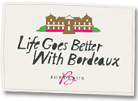 When most of us think of French wines, too often what comes to mind are expensive prices, confusing labels and unfamiliar, esoteric terminology.
When most of us think of French wines, too often what comes to mind are expensive prices, confusing labels and unfamiliar, esoteric terminology.
Even though many French wines are among my favorites, the wines have never seemed very user friendly. And it’s easy to spend more time trying to figure out what to buy than simply enjoying the wine.
But that doesn’t have to be the case. Near the end of 2009, Bordeaux launched a new campaign — “Life Goes Better With Bordeaux” — aimed at honing its image and capturing a larger share of the U.S. market. Aware that consumers often search the Internet for information and recommendations, Bordeaux launched a new Web site, www.enjoybordeaux.com.
The site offers sections for live chats, Bordeaux event listings from around the world, recommended wines priced under $25 (100 listed) and tips and facts about Bordeaux. There is much information that could change consumers’ perceptions about Bordeaux. I found the site easy to navigate with helpful tips.
The following are my picks for wines less than $25 and produced in the Bordeaux region of France.
- 2007 Chateau Bonnet Cabernet Sauvignon / Merlot (about $19 retail)
- 2007 Chateau Bel Air Haut Medoc (about $24 retail)
- 2008 Chateau Bonnet Bordeaux Blanc (about $15 retail)
- 2007 Chateau De Clairefont Margaux (about $25 retail)
- 2007 Chateau Mayne Pargade Blanc (about $10 retail)
- 2007 Michel Lynch Merlot (about $13 retail)
- 2007 Mouton-Cadet Red Bordeaux (about $10 retail)
by Lorri | Jan 20, 2010 | UnCorked
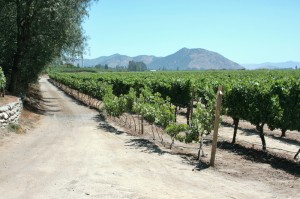 In the 1990s, the wine world’s mania for merlot created an enormous international demand. Chilean wineries, with their fruity-style wines, sold sizable amounts of this easy drinking varietal. One day, a viticulturist noticed an odd difference between the Chilean merlot vines and traditional merlot plantings — the leaves on the Chilean plantings did not look like other merlots. After a few tests, it was discovered that the Chilean plantings weren’t merlot at all. They were carmenere, a grape variety once planted alongside the most famous noble grapes of France’s Bordeaux vineyards, such as cabernet sauvignon and merlot.
In the 1990s, the wine world’s mania for merlot created an enormous international demand. Chilean wineries, with their fruity-style wines, sold sizable amounts of this easy drinking varietal. One day, a viticulturist noticed an odd difference between the Chilean merlot vines and traditional merlot plantings — the leaves on the Chilean plantings did not look like other merlots. After a few tests, it was discovered that the Chilean plantings weren’t merlot at all. They were carmenere, a grape variety once planted alongside the most famous noble grapes of France’s Bordeaux vineyards, such as cabernet sauvignon and merlot.
Chilean winemakers took this potentially scandalous event and turned it into a well-timed opportunity to introduce this unique grape to the world. With Chile’s ideal climate for this grape, and because producers pampered the fruit into a distinct style, Chilean wineries can now claim that its success was no accident.
Just as with the merlot grape for which it was mistaken, carmenere produces a highly approachable wine. With low tannin and low acid, the wine has a soft, fruity mouth feel compared with more tannic red wines. Consumers looking to discover wines outside of the better-known, more “fashionable” grapes, will find carmenere a treat.
THE VALUES
- 2007 Concha Y Toro Carmenere Frontera, Chile (about $9 retail)
- 2007 Root 1 Carmenere, Chile (about $14 retail)
- 2007 Ventisquero Carmenere, Chile (about $10 retail)
- 2007 Santa Rita Carmenere, Chile (about $13 retail)
THE SPLURGES
- 2007 Montes Alpha Carmenere, Chile (about $20 retail)
- 2007 Concha y Toro Marques de Casa Carmenere, Chile (about $22 retail)
- 2005 Concha y Toro Terrunyo Carmenere, Chile (about $48 retail)
by Lorri | Jan 13, 2010 | UnCorked
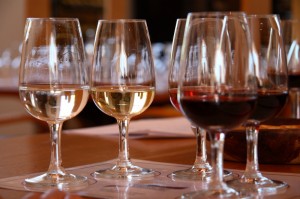 Starting a wine-tasting club is one of the most enjoyable and least intimidating ways to learn about wine. Tasting clubs are easy to create — simply find a few friends interested in wine and get together on a regular basis (usually once a month). Following are a few suggestions for starting a club.
Starting a wine-tasting club is one of the most enjoyable and least intimidating ways to learn about wine. Tasting clubs are easy to create — simply find a few friends interested in wine and get together on a regular basis (usually once a month). Following are a few suggestions for starting a club.
Choose friends with similar goals for the wine club. An ideal size is 8 to 10 people.
Each meeting should be built around a theme. In the beginning, it’s helpful to choose wines with something in common for comparison: for example, specific grape varieties, wine regions or styles. After the club gets going the ideas are limitless. Topics could include a grape variety grown in a warm climate versus a cold climate, wines under $15 or comparing 1-, 5-, 10- and 20-year-old wines.
For setup, you will need a wine glass for each wine being tasted, a dump bucket for discarding wine before the next pour or spitting out, pen and paper for notes and a pitcher of water, plain bread or crackers to clean your palate between wines. To better observe the color of wines use a white tablecloth for a background, and if possible, set up at a large table in a room with good lighting.
For each tasting, pour each guest 2 to 3 ounces. Taste white wines before red and dry whites before sweet, and reds from light to full-bodied. Discussing the wine is the key in building your wine vocabulary, knowledge and confidence. Take notes on color, aromas and flavors, finding similarities and differences in the wines. Above all, have fun and enjoy!
For more ideas, check out:
- Ultimate Wine Tasting Kit by Wine Spectator includes Harvey Steiman’s Essentials of Wine, Wine Spectator’s Pocket Guide to Wine, Quick Guide to Wine Tasting, bottle bags, tasting checklists, stemware tags, corkscrew.
- The Wine Tasting Party Kit: Everything You Need to Host a Fun and Easy Wine Tasting Party by St. Pierre includes wine bottle covers, tasting score pads, a cheat sheet, glass markers, and a 64-page illustrated book.
- The Wine Club: A Month by-Month Guide to Learning About Wine With Friends by Maureen Christian Petrosky.
- The Wine Enthusiast Essential Wine Tasting Kit includes Wine Enthusiast Magazine Pocket Guide to Wine plus 2006 Vintage Chart, two tasting checklist notepads, six bottle bags, six bottle stoppers, 24 bottle tags, a blank wine journal and two wine label removers.
- Winerd, wine trivia and tasting game.
 Consumers, retailers, restaurant owners and distributors — we are all faced with thousands of choices when it comes to buying a wine.
Consumers, retailers, restaurant owners and distributors — we are all faced with thousands of choices when it comes to buying a wine.



